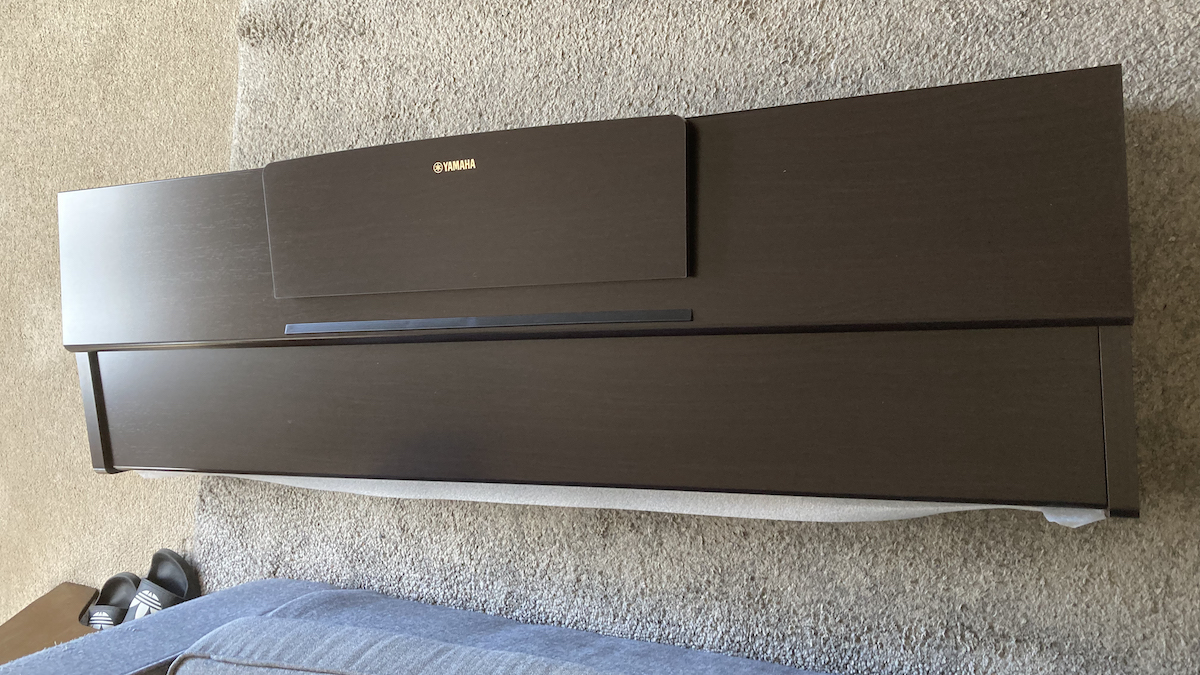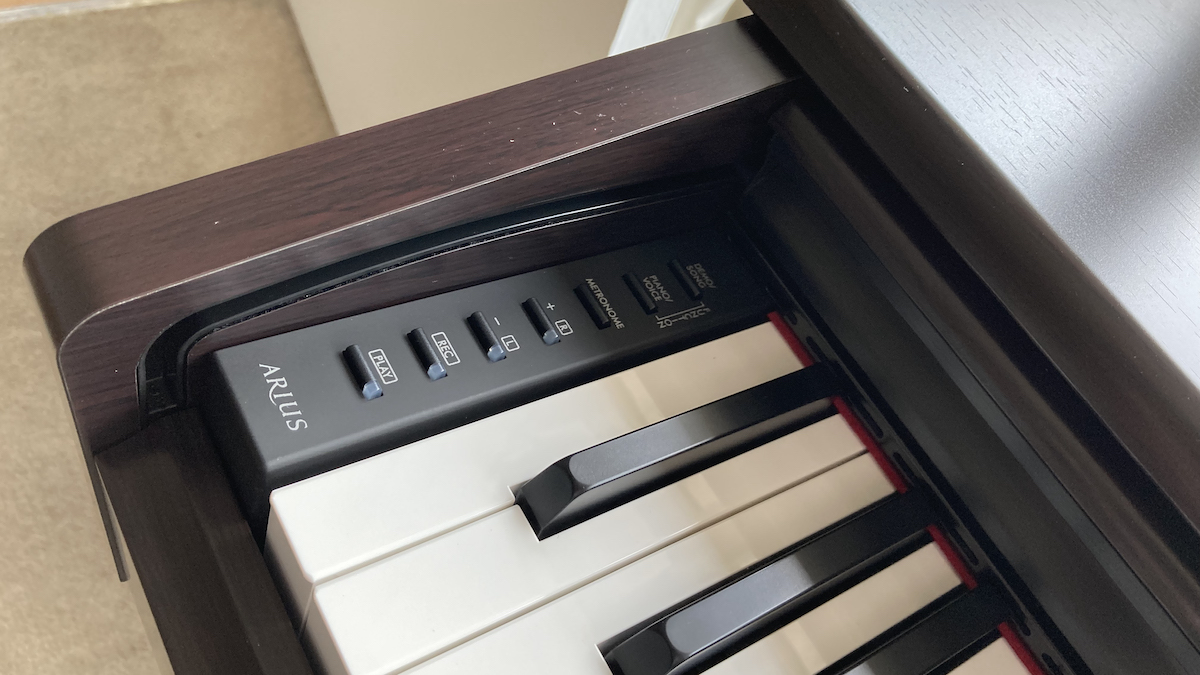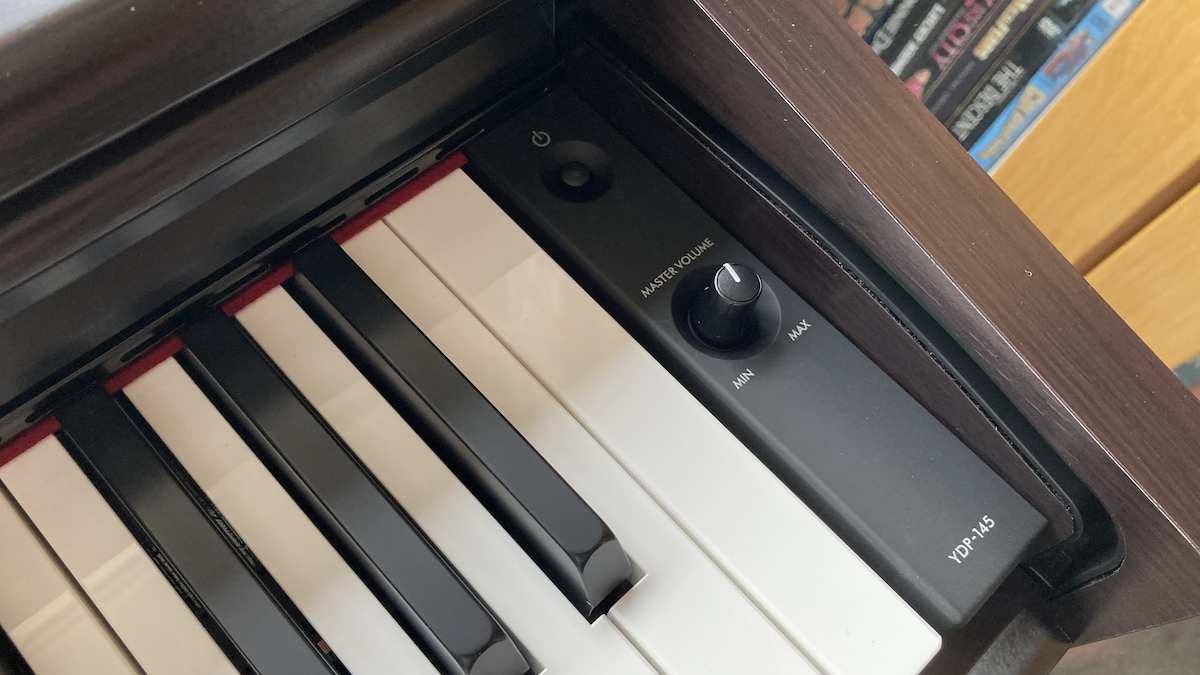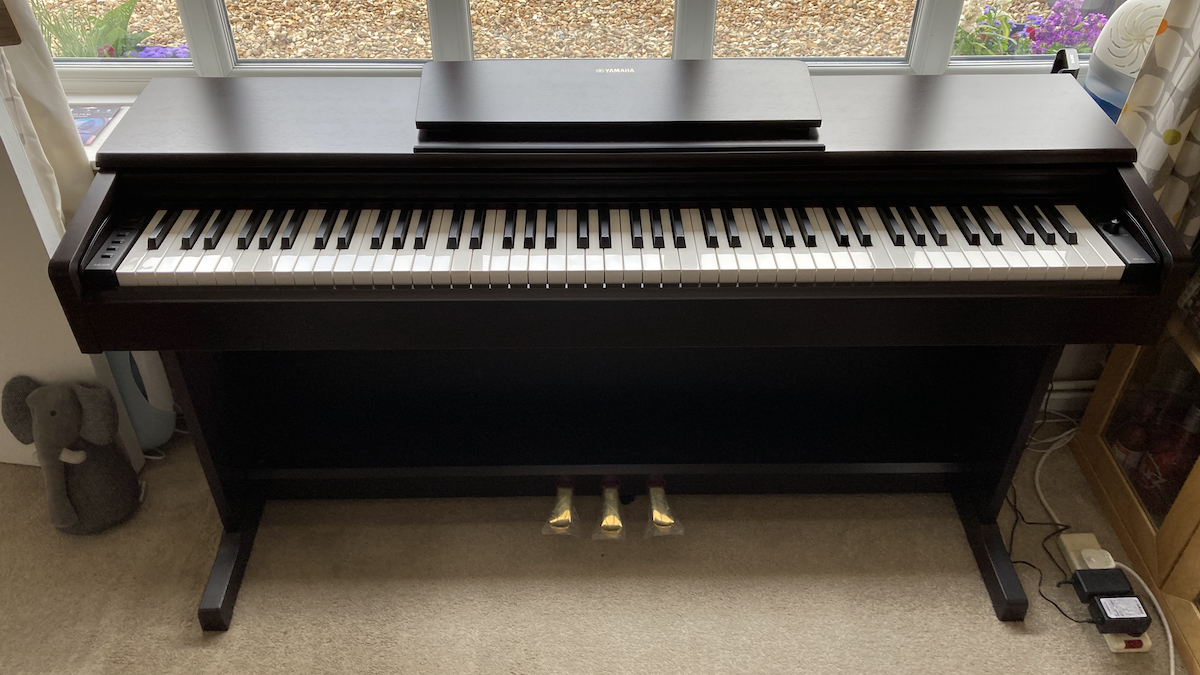MusicRadar Verdict
We would have no hesitation recommending the Yamaha YDP-145 to anybody from beginners to students or seasoned pros who want a neat, unobtrusive and extremely enjoyable instrument from a legendary brand.
Pros
- +
Exquisite CFX Grand Piano sound
- +
Fantastic keyboard
- +
Compact and elegant design
Cons
- -
Needs app or manual to adjust settings
MusicRadar's got your back
Yamaha YDP-145 review: What is it?
Updated in February 2022, Yamaha's Arius range of compact, console-style digital pianos currently consists of four models, the YDP-165, YDP-145, YDP-S55 and YDP-S35, all designed to bring together the elegant aesthetic and sophisticated sound of an acoustic piano with the convenience, practicality and compact footprint of a digital instrument into your home.
The YDP designation stands for Yamaha Digital Piano and the S represents the slimline models, which are shallower from front to back to allow them to fit into smaller spaces. Of the two full-size pianos in the range, the YDP-165 is the premium model in the lineup, while the model reviewed here, the YDP-145, is the lower-priced option.
Depending on your retailer, there may or may not be some self-assembly required to build the cabinet and lift the keyboard unit on top, but if your piano does turn up in a box, it’s a quick and easy job for two people to assemble, and the end result is a very smart-looking piece of musical furniture that should fit right into any size home without overpowering the space. We thought it was a bit of a shame that the backboard doesn’t extend all the way up to the underside of the keyboard. The gap makes the dangling cables visible from the front look a little untidy, although we do appreciate that this does help keep the instrument’s weight down.
Yamaha YDP-145 review: Performance & verdict


Casio Privia PX-870
The flagship of Casio’s Privia range, this console piano pairs their Tri-Sensor II Hammer Action keyboard with an advanced AiR sound engine and triple pedalboard.
Roland RP-102
Sporting Roland’s SuperNATURAL sound engine and excellent PHA-4 keybed, the RP-102 combines authentic piano performance and onboard practice features in a compact and affordable design.
While the YDP-165 gets Yamaha's GH3 keyboard with textured keytops and a more responsive action, the YDP-145 features the Graded Hammer Standard (GHS) keyboard with matte keytops. That’s not to say that the YDP-145's keyboard is not superbly playable - if anything, the GHS action has a slightly lighter, no less realistic touch that beginners may well prefer to the more premium GH3 version. Hidden beneath an elegant sliding keyboard cover that retreats back into the body of the instrument (in contrast to the hinged lid found on the slimline ’S’ models), the YDP-145’s keyboard is very responsive, enjoyable and easy to play, effortlessly providing a suitably wide range of dynamic expression, with the ‘graded’ moniker meaning that the key weighting gets progressively lighter as you move up the keyboard, just like on an acoustic piano.
To the left of the YDP-145’s keyboard is a vertical stack of seven multi-function buttons, with the power switch and rotary volume control located over to the right. The 'turn on and play' test - where we turn the piano on for the first time and attempt to get the main piano sound out of it without opening the manual - was passed with flying colours. On the other hand, selecting one of the other nine onboard sounds was not immediately obvious - our first attempt resulted in the piano shouting ‘Off!’ at us, which was a bit disconcerting! We then had to consult the user guide to find out what function, if any, we’d actually just turned off. It turns out that you change sounds by scrolling through the list of available tones in sequence, using repeated presses of the '+' button.
VRM VRM

The all-important grand piano tone, sampled in meticulous detail from Yamaha's flagship CFX Concert acoustic grand piano, is nothing short of remarkable. Full, rich, resonant, bright and powerful all at the same time, it's fuelled by the same sound engine and sample set as that found on the more expensive CLP ‘Clavinova’ range of premium digital pianos.
The all-important grand piano tone, sampled in meticulous detail from Yamaha's flagship CFX Concert acoustic grand piano, is nothing short of remarkable
In an acoustic piano, the way the cabinet, soundboard and strings resonate together when you play makes up a huge part of the behaviour and character of the instrument's sound. Virtual Resonance Modelling technology (VRM) is Yamaha's system for modelling this behaviour in their digital pianos, and as you'd expect, they've got it down to a very fine art indeed.
Want all the hottest music and gear news, reviews, deals, features and more, direct to your inbox? Sign up here.
The YDP-145 features a pared-down version of VRM known as VRM Lite. If you sustain a chord and listen extremely intently, you can just about discern the tiniest deficit in quality in the way multiple note resonances are generated compared to the full VRM you get on a Clavinova, but it certainly doesn't take anything away from the sound under normal playing conditions. In fact, the YDP-145 displays almost the same talent for making you think you're sat at a real piano as its more expensive Clavinova cousins. It's so good that you really do tend to forget that you're playing a digital instrument.
Pianist envy

One other significant area in which the CLP and YDP ranges differ is in the number of sounds on offer. The YDP-145 has ten sounds on board, so the emphasis is definitely on quality rather than quantity here. Aside from the main CFX grand piano sound, there are two alternative piano voices - Mellow Grand and Pop Grand - to choose from. Although there are versions of the famous DX7 E-piano and a more than acceptable Fender Rhodes-style sound, we were a bit disappointed to find no Wurlitzer EP200 patch - no impromptu covers of Supertramp’s Logical Song or Queen’s ‘You’re My Best Friend’ for us!
Elsewhere, you do get a functional harpsichord for Bach fans, a serviceable vibraphone for amusing your friends and family with the Little Big Planet music or the gallery theme from ‘Vision On’, and two perfectly usable types of bread-and-butter organ sound. Oddly though, the strings patch exhibited a curious lack of sustain, with notes dying away prematurely when held down, even with the damper pedal depressed.
Gotta get app to get down

Due to the paucity of front panel controls, you can’t really deep-dive into this instrument without consulting the manual, but a more appealing alternative for some exists in the shape of Yamaha’s free Smart Pianist app for mobile devices, which includes a Piano Room function that allows adjustment of tonal and resonance settings. This makes sound selection and setting adjustment much easier than the standard button/key combo - there's no labelling on the keyboard, so without the app you're back to looking up function combos in the user guide if you want to adjust anything.
Since there are no Bluetooth functions on the YDP-145, you’ll need to connect your instrument to your mobile device with a USB cable to use the app, at which point you’ll discover that all the sockets, including the dual 6.3mm headphone jacks, are located on the underside of the keyboard. You have to kneel down and peer up underneath the piano to locate them, which is not the best arrangement if you’re at the age when you have to start concentrating when going down stairs.
Feature presentation
In terms of additional features, the list isn't terribly long. The damper pedal supports half-pedalling, a standard characteristic in an acoustic piano and therefore an essential feature in premium digital pianos, which means that the sound sustains more the further you depress the pedal. There’s a built-in metronome but no onboard rhythm patterns, Yamaha’s Intelligent Acoustic Control function optimally corrects the sound balance for a natural effect according to the overall volume of the piano, and the Stereophonic Optimiser recreates the spacious sound characteristics of a grand piano even while wearing headphones. Meanwhile, all Arius models come with a library of 353 built-in songs, including 50 famous classical pieces that are also represented in an accompanying book of sheet music.
Aside from the odd foible, we loved the YDP-145, and would have no hesitation recommending it to anybody from beginners to students or seasoned pros who want a neat, unobtrusive and extremely enjoyable instrument from a legendary brand. If you’re looking for an elegant musical centrepiece for your living space, such a premium primary piano sound at this price point makes the YDP-145 a serious contender for your hard-earned cash, wherever you happen to be on the ladder of pianistic ability.
Yamaha YDP-145 review: Specification
- Keys: 88 Fully-weighted, Graded Hammer Standard keyboard
- Pedals: Damper, Soft, Sostenuto. Half-pedalling support
- Polyphony: 192
- Sounds: 10
- Onboard songs: 353
- Connectivity: 2 x 6.3mm headphone outputs, USB to Host
- Speakers: 2 x 8W, 12cm
- Dimensions (mm) W x D x H: 1357 x 422 x 815
- Weight (kg): 38
- Contact: Yamaha
Dave has been making music with computers since 1988 and his engineering, programming and keyboard-playing has featured on recordings by artists including George Michael, Kylie and Gary Barlow. A music technology writer since 2007, he’s Computer Music’s long-serving songwriting and music theory columnist, iCreate magazine’s resident Logic Pro expert and a regular contributor to MusicRadar and Attack Magazine. He also lectures on synthesis at Leeds Conservatoire of Music and is the author of Avid Pro Tools Basics.

